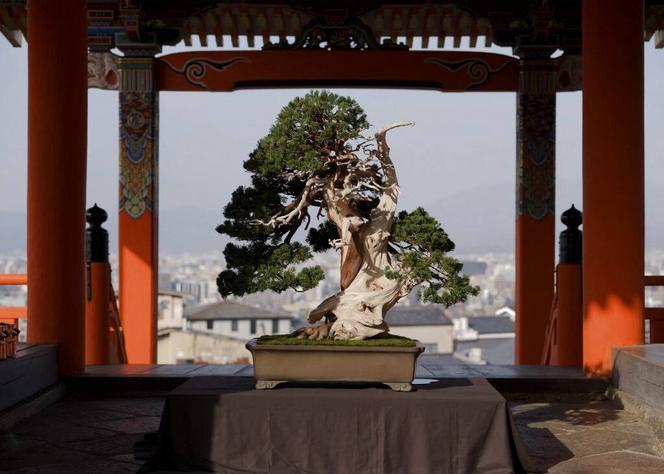

LETTER FROM TOKYO

The Japanese art of bonsai is attracting growing interest. These miniature trees, sculpted over time through careful pruning and branch manipulation by artisans with centuries-old expertise, are experiencing global success to the extent that they have become targets of theft. The repetition of these thefts concerns both artisans and Japanese authorities.
"Lately, all anyone talks about is thefts in the sector. It's unbearable," Tatsuharu Takeshita, from the Koyo-en bonsai house in Inazawa (central Japan), told the Kyodo news agency. The craftsman has lost 15 bonsai trees in two robberies. Operating in the dead of night, the thieves broke into the protective enclosure. Some of the missing trees belonged to Koyo-en's customers, who had left the plants with them for maintenance.
On May 8, 33 bonsais worth a total of 18.8 million yen (€110,200) were stolen from Gasho-en. "I'm so angry that I'm ready to beat the thieves if they come here again. But, above all, I want the trees to come back safe and sound because bonsai is a work of art that takes an infinite amount of time to create," said Yusei Sasaki, third-generation owner of the company, which is based in Mifune (southwest Japan), cultivating almost 500 miniature trees.
The Japanese Bonsai Association has registered 25 thefts in 11 prefectures since February 2023. One of these stolen miniature trees alone was worth over 3 million yen.
The bonsai tradition originated in Japan during the Heian period (794-1185). It developed from the ancient Chinese art of penjing, based on the idea of creating a miniature natural landscape for contemplation, which had been imported to the Japanese court.
In the early days, the craft remained the preserve of the aristocracy. The practice then gradually spread to other strata of society. Zen Buddhism gave it a particular, more refined direction. Seeking beauty in austerity, Zen monks developed a style based on the idea of turning a single tree into a representation of the universe. In the Edo period (1603-1868), as samurais' work became scarce in a peaceful archipelago, some of them supplemented their income by growing bonsais. The pleasure comes from the fact that the tree is constantly changing.
Like all arts, bonsai, which is divided into two categories – conifers and deciduous trees (which lose their leaves for part of the year) – has its schools, its styles, and its masterpieces. Kunio Kobayashi, founder of Tokyo's Shunkaen Bonsai Museum and one of the world's greatest bonsai artists, maintains an 800-year-old miniature tree.
You have 43.77% of this article left to read. The rest is for subscribers only.
